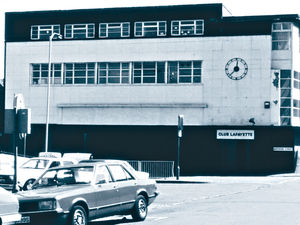Sensational Space Facts: Mind-bending truths about the cosmos
You think you know your universe? Here are a few gems that will blow your mind...

Astronauts’ footprints on the moon could be there for at least 100 million years
Since the moon doesn’t have an atmosphere, there’s no wind or water to erode or wash away the Apollo astronauts’ mark on the moon, or that of future Artemis moonwalkers when they finally arrive there.
That means their footprints, roverprints, etc, will stay preserved on the moon for a very long time unless intentionally removed. They won’t stay on there forever, though. The moon is still a dynamic environment. It’s actually being constantly bombarded with ‘micrometeorites’, which means that erosion is still happening on the moon, just rather slowly...
A teaspoonful of neutron star would weigh the same as the entire human race
This one is rather mind-boggling. Neutron stars are composed almost entirely of neutrons packed together in a tiny radius.
One teaspoonful of this material would in fact weigh over a trillion kilograms — more than the weight of the entire human population.
To exist as something as dense as a neutron star, the whole of humanity would need to be crammed into a space equivalent to the size of a sugar cube!
If two pieces of the same type of metal touch in space, they will bond and be permanently stuck together
This amazing effect is called cold welding. It happens because the atoms of the individual pieces of metal have no way of knowing that they are different pieces of metal, so the lumps join together.
This wouldn’t happen on Earth because there is air and water separating the pieces. The effect has a lot of implication for spacecraft construction and the future of metal-based construction in vacuums.
There is an uncountable number of stars in the known universe
Essentially, we have no concrete idea how many stars there are in the universe. Right now, boffins use an estimate of how many stars there are in our own galaxy, the Milky Way, and that number is then multiplied by the best guesstimate of the number of galaxies in the universe. After all that delicious mathematics, NASA can only confidently say that there are zillions of stars, with a ‘zillion’ being ‘an indeterminately large number’.
An Australian National University study put its estimate at 70 sextillion – 70,000 million million million. So a lot. A very lot indeed...
The centre of the galaxy tastes like raspberries, smells like rum, and is full to the brim with booze
We’re not joking. Back in 2009, astronomers exploring a giant cloud of gas and dust at the centre of the Milky Way made an unexpected discovery – the cloud was packed full of ethyl formate, a chemical with a pair of delicious qualities: it gives raspberries their flavour, and smells like rum.
Not only that, another nearby cloud region is notable for being full of ethyl alcohol, or ethanol – the type we mere mortals use to produce alcoholic beverages.
It in fact contains enough alcohol to (drum roll) supply every person on the planet with 300,000 pints of beer a day for the next billion years!
99 per cent of our solar system’s mass is the sun
Yep, she’s a big’un...
Our star, the sun, is so dense that it accounts for a colossal 99 per cent of the mass of our entire solar system. That’s what allows it to dominate all of the planets gravitationally.
Every second, the sun fuses approximately 600 million tons of hydrogen to helium. It also converts about 4 million tons of matter to energy as a by-product.
When the sun dies, it will become a red giant and envelop the Earth and everything on it. Luckily though that shouldn’t happen for another 5 billion years.
A Venus day is longer than a Venus year
This can be a bit difficult to get your head round – but it’s true. A planet’s ‘day’ is the time it takes to complete a full rotation on its own axis, and a planet’s ‘year’ is how long it takes to complete its orbit around the sun.
Venus’s axis rotation is very slow – it takes about 243 Earth days to spin around just once. Because it’s so close to the sun however, its year is quick – about 225 Earth days. That means that a day on Venus is a little longer than a year on Venus.
Neptune has only completed one orbit of the Sun since its discovery
Having only been discovered in 1846 and taking a gruelling 165 years to complete one full orbit around the Sun, Neptune only finished its first full post-discovery orbit 11 years ago in 2011.
‘Former planet’ Pluto has got a long way to go to match this however, and since its 1930 discovery is nowhere near to completing a full 248-year orbit.





